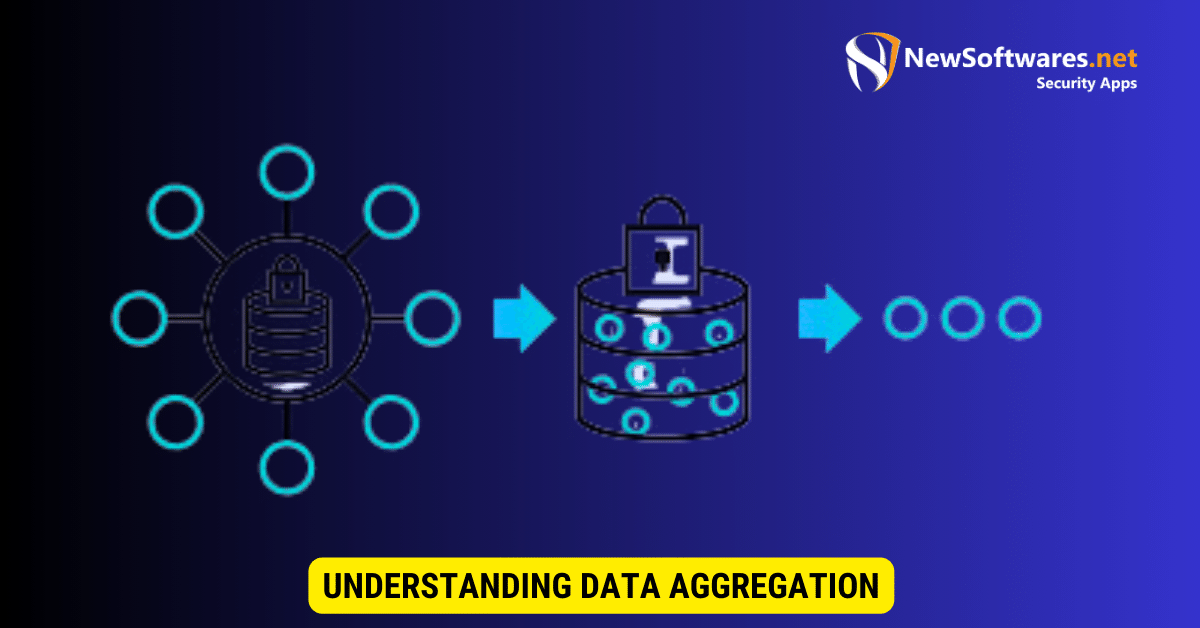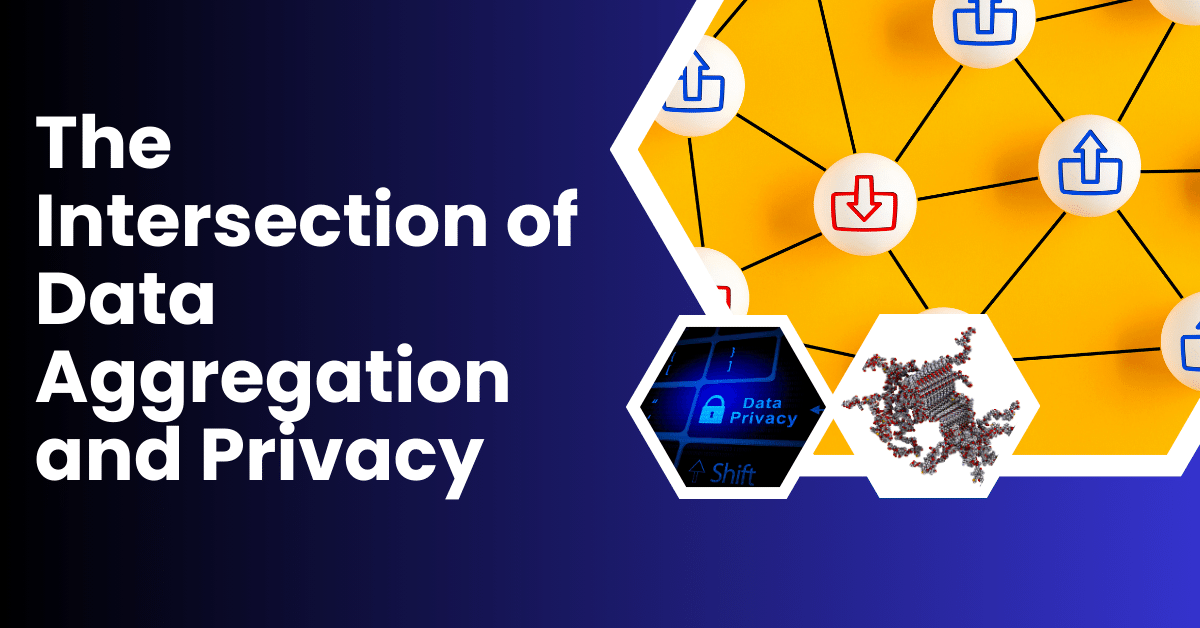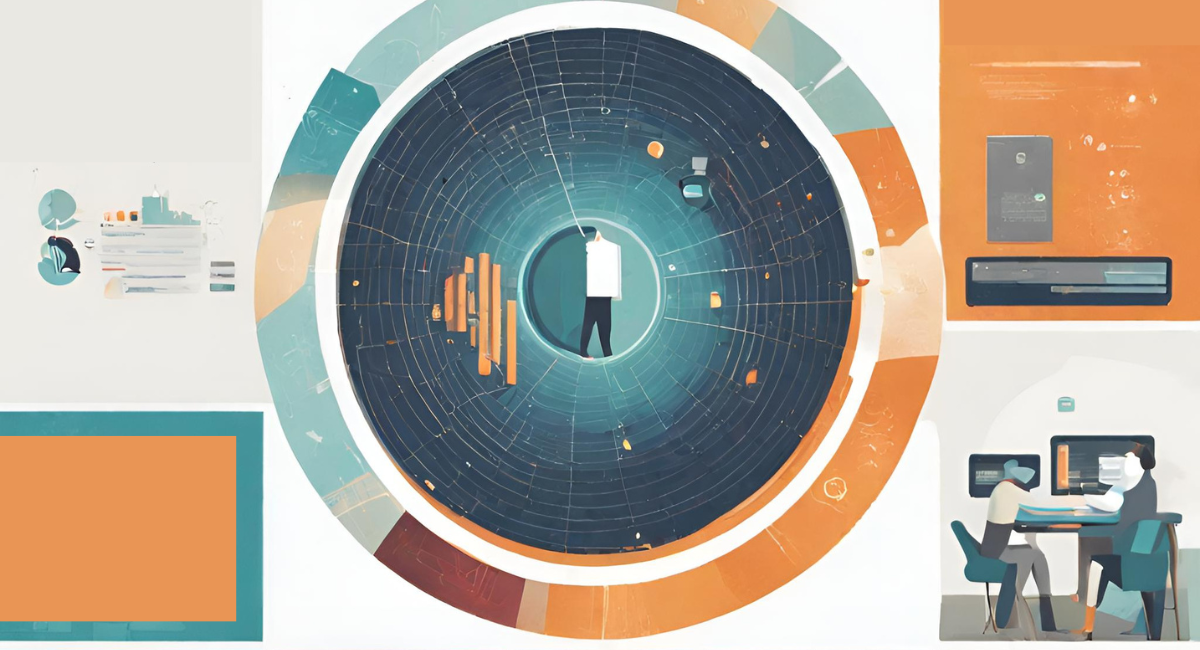Data aggregation, which involves collecting data from various sources to combine into a single dataset, can threaten privacy when it allows entities to derive insights or details about individuals that wouldn’t be obvious from a single data source.
Data aggregation has become an integral part of the digital landscape, allowing organizations to collect, compile, and analyze vast amounts of data. While this process has advantages regarding insights and efficiency, it also poses a significant threat to privacy. Understanding the concept and implications of data aggregation is crucial in today’s interconnected world.
Understanding Data Aggregation

Definition and Process of Data Aggregation
Data aggregation refers to collecting and consolidating data from various sources into a single unified dataset. This process involves gathering information from multiple individuals, devices, or platforms and combining it to extract meaningful patterns and trends.
Data aggregation can occur through different methods, including automated algorithms, data warehouses, or manual compilation. Each approach aims to streamline data collection and analysis for various purposes, such as market research, personalization, or business intelligence.
Automated algorithms are commonly used in data aggregation to gather and analyze large volumes of data. These algorithms can automatically collect data from various sources, such as websites, social media platforms, or IoT devices. By leveraging machine knowledge and artificial intelligence techniques, these algorithms can identify patterns, correlations, and anomalies within the aggregated data.
Data warehouses are another method used for data aggregation. These centralized repositories store data from multiple sources in a structured and organized manner. Data warehouses enable organizations to store and access large quantities of data for analysis and reporting purposes. They often employ data integration techniques to ensure data consistency and accuracy.
Manual compilation of data is a more traditional approach to data aggregation. It involves manually collecting data from different sources, such as surveys, interviews, or physical documents, and entering it into a unified dataset. While this method may be time-consuming and prone to human error, it can be useful when automated or digital data collection is not feasible.
The Role of Data Aggregation in Today’s Digital World
In our increasingly interconnected society, data aggregation plays a fundamental role in many features of our lives. It enables personalized services, targeted advertisements, efficient resource allocation, and improved decision-making. Organizations harness the power of aggregated data to understand consumer behaviors, optimize operations, and enhance user experiences.
For example, e-commerce platforms utilize data aggregation to offer personalized product recommendations based on a user’s browsing and purchase history. By analyzing aggregated data from millions of users, these platforms can identify common preferences and trends, allowing them to suggest products likely to interest individual users.
Data aggregation also plays a crucial role in the field of healthcare. By aggregating and analyzing patient data from many bases, such as electronic health records, wearables, and medical devices, healthcare providers can gain insights into disease patterns, treatment effectiveness, and population health trends. This information can then be used to improve patient care, develop targeted interventions, and allocate healthcare resources more efficiently.
However, as valuable as data aggregation may be, we must recognize its potential privacy threats. The intersection of data aggregation and privacy raises several concerns, necessitating a comprehensive understanding of their implications.
One of the main concerns is the risk of data breaches and unauthorized access to aggregated datasets. As data aggregation involves consolidating data from multiple sources, the security of the aggregated dataset becomes critical. Administrations must implement robust security measures to protect sensitive data and ensure compliance with data protection regulations.
Another privacy concern is the potential for data aggregation to reveal personally identifiable information (PII) or sensitive details about individuals. Even if individual data points are anonymized, combining multiple data sources can potentially lead to identifying individuals. This highlights the importance of data anonymization techniques and the need for organizations to establish clear guidelines and policies regarding the use and sharing of aggregated data.
In conclusion, data aggregation is a powerful tool that permits organizations to extract valuable insights from diverse data sources. It is vital in many industries, including marketing, healthcare, finance, and research. However, balancing the benefits of data aggregation and protecting privacy rights is essential. By implementing appropriate security measures and adhering to ethical data practices, organizations can harness the power of data aggregation while respecting individual privacy.
The Intersection of Data Aggregation and Privacy

The Concept of Privacy in the Digital Age
Privacy, in the context of the digital age, refers to an individual’s right to control the collection, usage, and dissemination of their personal information. It encompasses the protection of sensitive data, the ability to maintain anonymity when desired, and the safeguarding of personal autonomy.
Privacy becomes increasingly complex as technology advances and data aggregation becomes more prevalent. The digital landscape introduces new challenges and potential threats, and balancing data utilization and personal privacy becomes paramount.
How Data Aggregation Impacts Privacy?

Data aggregation poses inherent risks to privacy due to the vast amount of personal information involved. When data from multiple sources is combined, seemingly innocuous details can be used to construct highly accurate and intrusive profiles of individuals. Moreover, data aggregation amplifies the potential consequences of a privacy breach.
Individuals may not realize how much their data is being collected and analyzed. Once aggregated, this data becomes valuable and susceptible to misuse, unauthorized access, and unintended exposure. It is essential to acknowledge the potential threats that data aggregation presents to privacy and take steps to mitigate these risks.
Potential Threats of Data Aggregation to Privacy
Unintended Data Sharing and Exposure
Data aggregation often involves sharing data between multiple parties, such as third-party vendors or brokers. While this collaboration can yield valuable insights, it also increases the risk of unintended data exposure. The exchange of information across various organizations creates potential vulnerabilities that malicious actors could exploit.
Furthermore, even with the best intentions, data sharing can lead to unintended consequences. Once data is shared, individuals lose control over its subsequent usage and may find their personal information in unexpected contexts or exposed to unauthorized individuals.
Profiling and Predictive Analysis Risks
Data aggregation enables the creation of comprehensive individual profiles by combining data points from various sources. In this context, profiling refers to collecting, analyzing, and categorizing individuals based on their characteristics, behaviors, or preferences.
While profiling can have legitimate purposes, such as offering personalized recommendations, it poses risks. Profiling can perpetuate biases, reinforce stereotypes, and lead to discrimination or exclusion. Moreover, predictive analysis techniques used in conjunction with profiling can significantly impact individuals’ lives, influencing decisions made by businesses, insurers, and public entities.
Legal and Ethical Implications of Data Aggregation
Current Laws and Regulations on Data Privacy
Various countries and regions have implemented laws and regulations to protect individuals’ privacy rights in response to data aggregation’s potential threats. These include the European Union’s General Data Protection Regulation (GDPR), California’s Consumer Privacy Act (CCPA), and other data protection frameworks worldwide.
These regulations aim to hold organizations accountable for their data collection practices, ensure transparency, and empower individuals with control over their personal information. However, the constantly evolving nature of technology and data aggregation creates ongoing challenges for policymakers and regulators to strike the right balance between revolution and privacy protection.
Ethical Concerns in Data Aggregation Practices
Beyond legal requirements, ethical considerations are crucial regarding data aggregation. Organizations must demonstrate responsible data stewardship and respect individual privacy rights. This involves implementing clear and accessible privacy policies, obtaining informed consent, and allowing individuals to control their data.
Additionally, organizations should evaluate the potential societal impacts of their data aggregation practices. Ethical questions arise regarding the fairness, transparency, and potential harms associated with data collection, analysis, and usage. Ethical frameworks can guide decision-making processes and ensure data aggregation aligns with societal values.
Mitigating the Threats of Data Aggregation to Privacy
Privacy-Enhancing Technologies and Techniques
Various privacy-enhancing technologies and techniques can help mitigate the risks associated with data aggregation. Anonymization, pseudonymization, and secure data encryption can reduce the likelihood of unauthorized access or exposure to sensitive personal information.
Moreover, organizations can adopt privacy by design principles, emphasizing privacy considerations throughout their data aggregation processes. Organizations can minimize privacy risks and enhance individuals’ control over their personal information by embedding privacy measures into their systems.
The Role of Policy and Legislation in Protecting Privacy
Comprehensive policy and legislation frameworks play a crucial role in protecting privacy in the context of data aggregation. Governments and regulatory bodies must adapt and continually update privacy laws to keep pace with technological advancements and address emerging privacy challenges.
Moreover, fostering international cooperation and harmonization is vital to ensure consistent privacy standards across borders. Collaboration between stakeholders, including governments, organizations, academia, and civil society, can drive the development of effective policies and practices that safeguard personal privacy in the era of data aggregation.
Key Takeaways
- Data aggregation can reveal patterns that individual data points don’t show.
- Even if individual datasets are anonymous, combining them can lead to de-anonymization.
- Data brokers often aggregate data from various sources, posing potential privacy risks.
- The aggregated data can be used for purposes the individual did not consent to.
- Privacy laws and regulations are increasingly addressing the risks associated with data aggregation.
FAQs
Q: Why is data aggregation considered risky for privacy?
A: When data from multiple sources is combined, it can reveal insights about individuals not evident from a single source, leading to potential privacy breaches.
Q: Can aggregate data be truly anonymous?
A: While individual data points might be anonymous, the combination can often lead to de-anonymization due to the patterns and insights it reveals.
Q: Are there regulations that control data aggregation?
A: Yes, privacy laws in many countries and regions address data aggregation and potential risks, forcing companies to follow strict guidelines.
Q: Can I prevent my data from being aggregated?
A: While difficult, you can minimize your digital footprint by being cautious about what you share online and using tools/services that prioritize privacy.
Q: What is the difference between data aggregation and data collection?
A: Data collection is gathering, while aggregation involves combining data from different sources to form a single dataset.
Conclusion
In conclusion, the widespread practice of data aggregation brings numerous benefits but poses significant threats to privacy. Understanding the concept, implications, and potential risks associated with data aggregation is crucial to balance utilizing the power of data and protecting individuals’ privacy rights. By embracing responsible data management practices, leveraging privacy-enhancing technologies, and implementing robust legal and ethical frameworks, we can mitigate the threats posed by data aggregation and establish a more privacy-conscious digital world.
